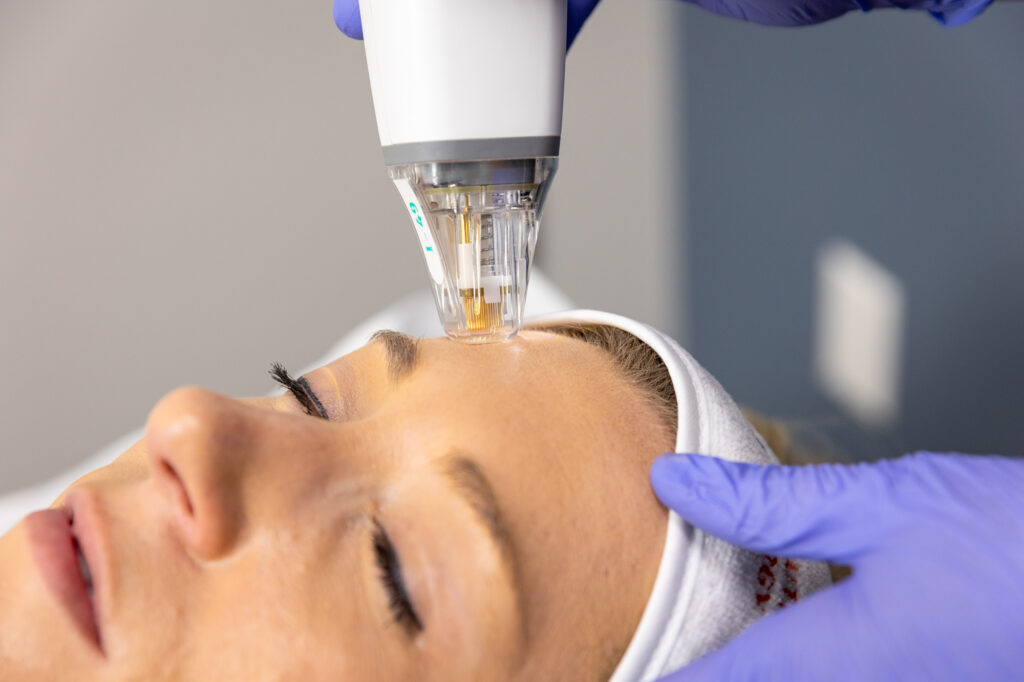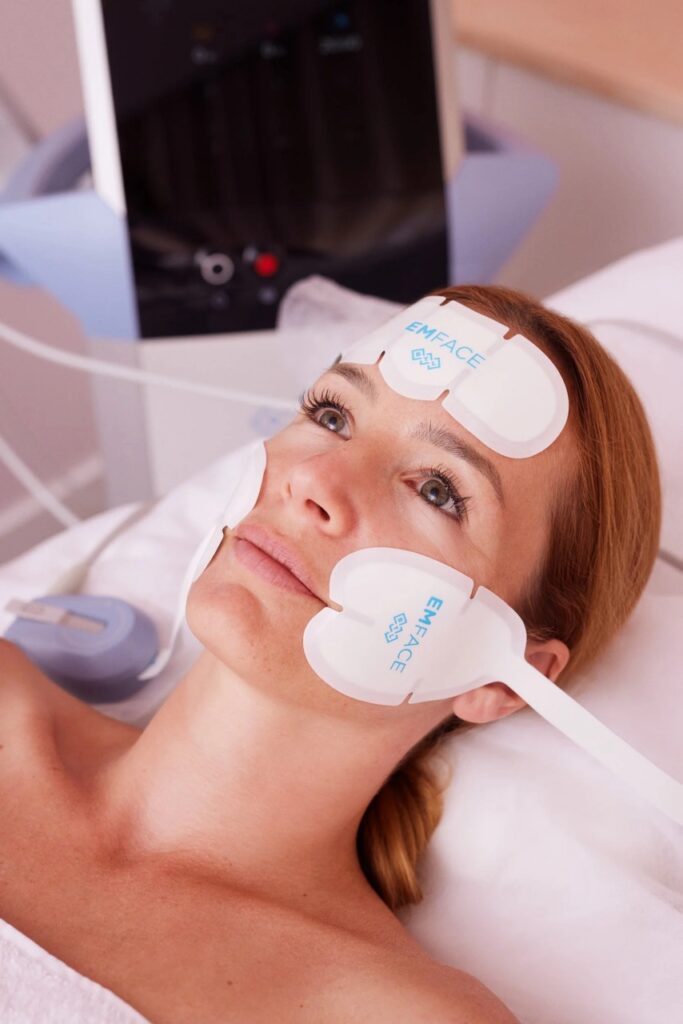
RF microneedling is a versatile skin rejuvenation treatment that addresses multiple concerns including wrinkles, acne scars, enlarged pores, skin laxity, uneven texture, stretch marks, and hyperpigmentation. By combining precision microneedling with radiofrequency energy, this treatment stimulates collagen production in deeper skin layers whilst resurfacing the surface, making it effective for both anti-ageing and corrective skin concerns across various areas of the face, neck, and body.
What exactly is RF microneedling and how does it work?
RF microneedling combines traditional microneedling technology with radiofrequency energy to create a dual-action treatment. The device uses fine needles to create controlled micro-injuries in the skin whilst simultaneously delivering radiofrequency heat energy to deeper tissue layers. This combination triggers your body’s natural healing response more effectively than either treatment alone, stimulating robust collagen and elastin production throughout multiple skin layers.
The technology works by penetrating through the epidermis to reach the deeper dermis, where the radiofrequency energy heats tissue and promotes cellular remodelling. The depth of energy penetration depends on several factors including skin hydration, collagen content, and the specific frequency used by the device. Modern devices offer enhanced precision and improved comfort features that make the treatment more tolerable whilst delivering consistent results.
The radiofrequency component can be delivered through monopolar or bipolar energy flow. Monopolar technology deposits energy more deeply into the reticular dermis, whilst bipolar allows for higher energy levels with more superficial penetration. This versatility enables practitioners to customise treatments based on your specific skin concerns and treatment areas.
What skin concerns can RF microneedling address?
RF microneedling effectively treats a comprehensive range of skin concerns by working on multiple skin layers simultaneously. The treatment addresses fine lines and wrinkles through collagen remodelling, reduces the appearance of acne scars and surgical scars by breaking down fibrous tissue, minimises enlarged pores through skin tightening, improves skin laxity and sagging, evens out skin texture and tone, diminishes stretch marks, and corrects sun damage and hyperpigmentation.
The treatment’s effectiveness stems from its ability to stimulate collagen production deep within the dermis whilst promoting cellular turnover at the surface. For wrinkles and fine lines, the radiofrequency energy heats tissue to trigger new collagen formation, which naturally plumps and smooths the skin over time. When treating acne scars, the microneedles break up scar tissue whilst the heat energy encourages healthy tissue regeneration and remodelling.
One of the remarkable advantages of this technology is that it can address various concerns in a single session. The treatment depth can be adjusted for different areas and issues—typically ranging from 0.5mm for delicate perioral skin to 2.0mm for areas like the nasal sidewalls that can tolerate deeper penetration. The treatment can be precisely customised for different skin issues and treatment depths, allowing us to target your specific combination of concerns effectively.
The treatment works particularly well for skin laxity because the radiofrequency energy tightens existing collagen fibres whilst promoting new collagen and elastin production. For hyperpigmentation and uneven tone, the controlled micro-injuries encourage cellular turnover, helping to fade discolouration whilst the deeper heating promotes overall skin renewal.
How does RF microneedling compare to other skin rejuvenation treatments?
RF microneedling bridges the gap between non-invasive and invasive procedures by offering significant results with minimal downtime. Unlike traditional microneedling alone, the addition of radiofrequency energy allows for deeper tissue remodelling without disrupting the epidermis when performed correctly. This makes it more effective than standard microneedling whilst being gentler than ablative laser treatments that remove the skin’s surface layer.
Compared to laser treatments, RF microneedling offers unique advantages for diverse skin types. Whilst some lasers carry risks of hyperpigmentation for darker skin tones, radiofrequency microneedling is safe and effective across all skin types because the energy bypasses the epidermis and targets deeper layers directly. Chemical peels work primarily on the surface, whilst RF microneedling addresses concerns at multiple depths simultaneously.
Unlike injectable treatments that add volume or relax muscles, RF microneedling works with your body’s natural healing processes to improve skin quality from within. It can treat delicate areas like around the eyes and neck where other treatments may be too aggressive. The treatment also complements surgical procedures—it’s safe to perform alongside or after procedures like facelifts and blepharoplasty because it doesn’t disrupt the epidermis.
Advanced technologies like Exion RF microneedling represent the premium tier of this treatment category, offering enhanced safety profiles through features like insulated needle tips that protect the epidermis whilst delivering precise energy to target tissues. These systems also include adjustable power, depth, and exposure time settings that reduce zones of injury whilst delivering highly targeted energy, making them particularly suitable for patients with sensitive skin or those concerned about downtime.
Who is an ideal candidate for RF microneedling treatment?
Ideal candidates for RF microneedling include individuals seeking anti-ageing solutions without surgery, those with acne scarring or textural concerns, patients wanting skin tightening and rejuvenation, and people looking for preventative skin maintenance. The treatment suits a wide range of ages and skin types, making it accessible to many people looking to improve their skin’s appearance and health.
The treatment is particularly suitable for patients who want noticeable results but cannot commit to the extended downtime associated with more aggressive procedures. Because RF microneedling is safe for all skin tones, it’s an excellent option for individuals with darker complexions who may not be suitable candidates for certain laser treatments due to hyperpigmentation risks.
Realistic expectations are important for treatment success. Whilst visible improvements can appear after just one session, optimal results typically develop over several months as new collagen forms. Most patients achieve their best outcomes with a series of treatments spaced appropriately, with results lasting six months to a year depending on individual factors and maintenance.
However, RF microneedling isn’t suitable for everyone. Patients with active skin infections, open wounds, or certain skin conditions in the treatment area should postpone treatment. Those with bleeding disorders or taking blood thinners require special consideration and careful evaluation. Pregnant or breastfeeding women should also avoid the treatment. Additionally, patients with a history of keloid scarring need individualised assessment, though devices with insulated needles may be appropriate options for these individuals.
The best approach is to schedule a consultation with our qualified practitioners who can assess your specific skin concerns, medical history, and aesthetic goals. We create personalised treatment plans tailored to your unique skin type and desired outcomes, ensuring you receive the most appropriate care for transformative results. During your consultation, we’ll discuss treatment depth, energy levels, the number of sessions recommended, and realistic timelines for achieving your goals.
